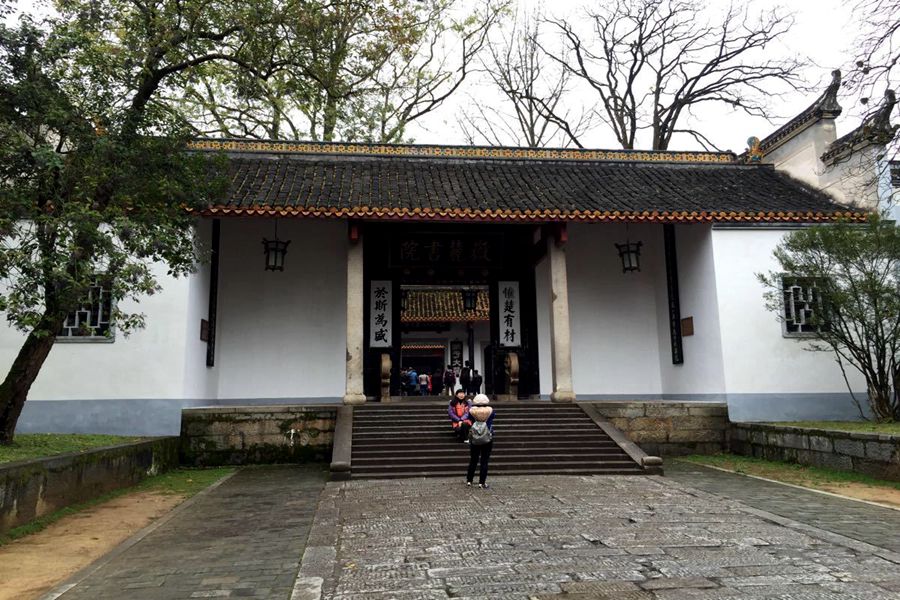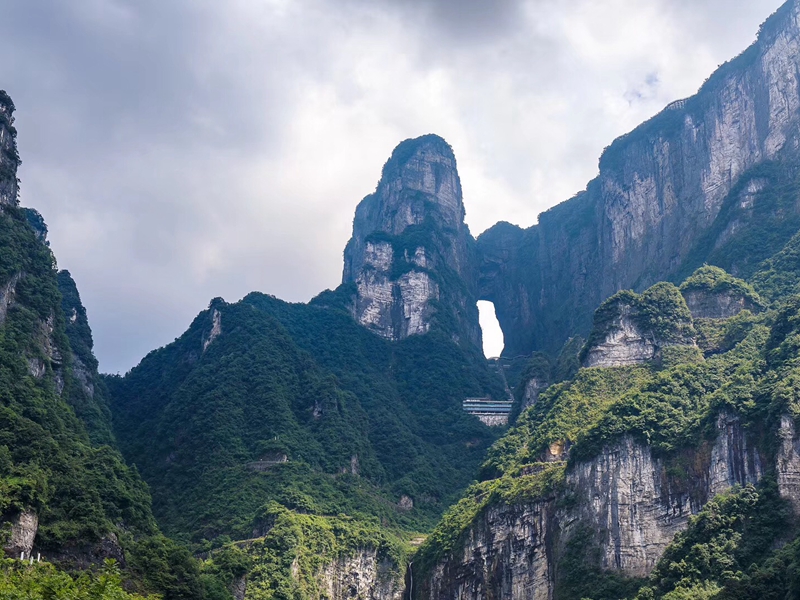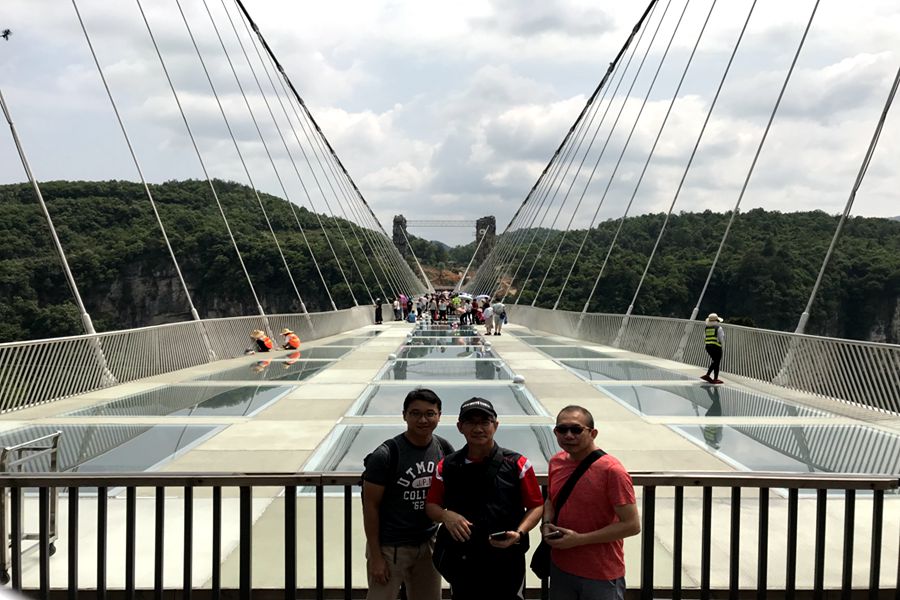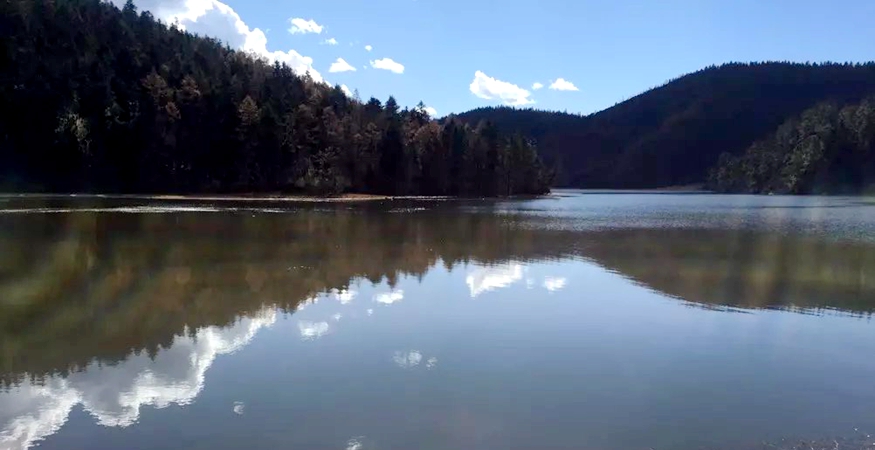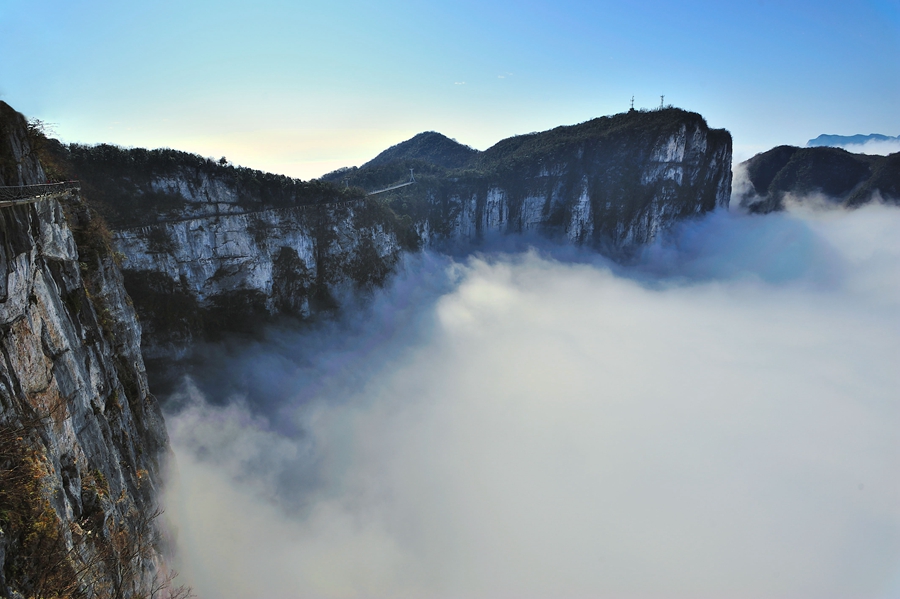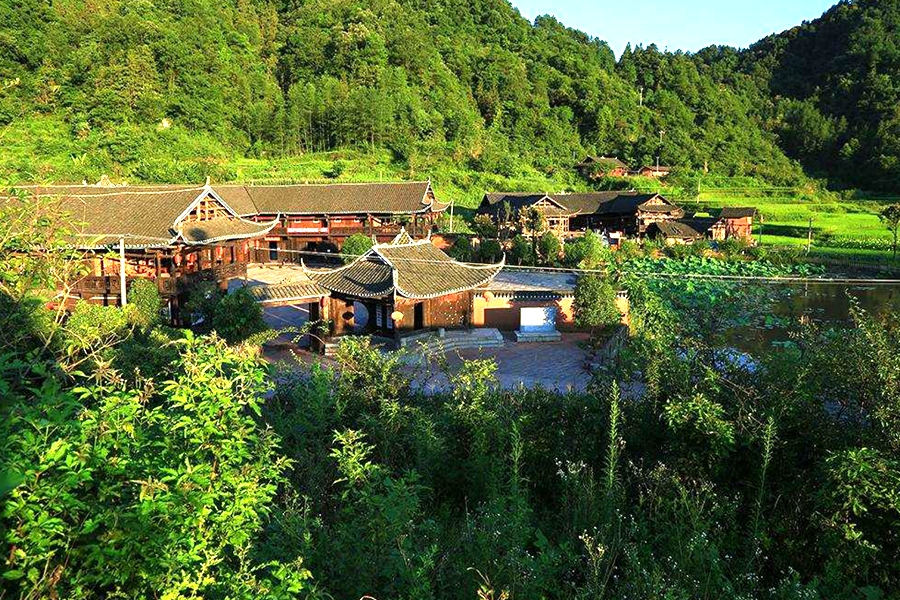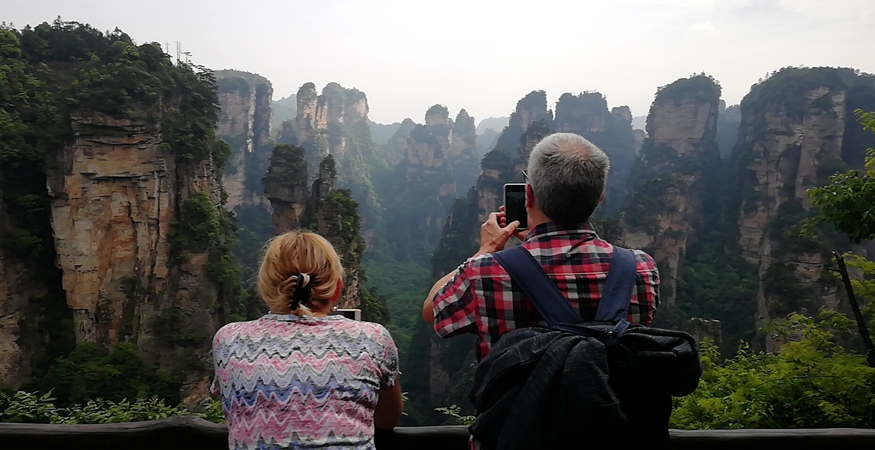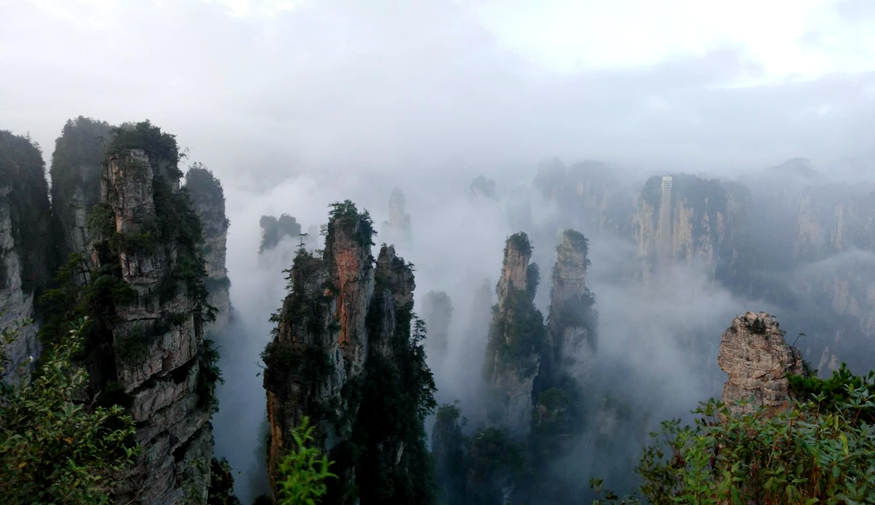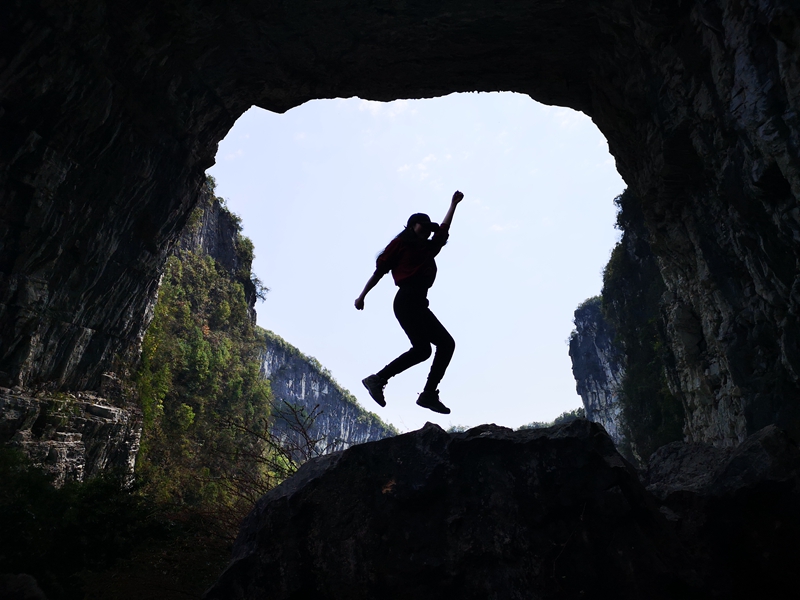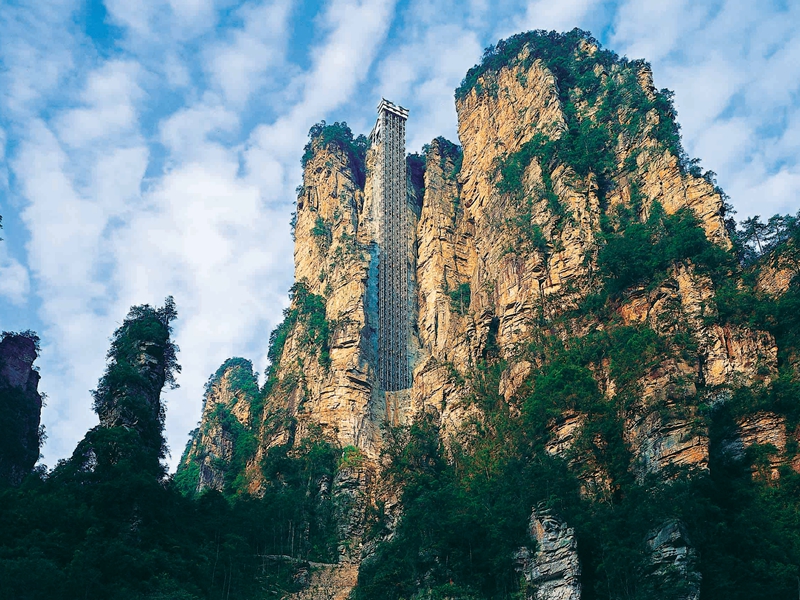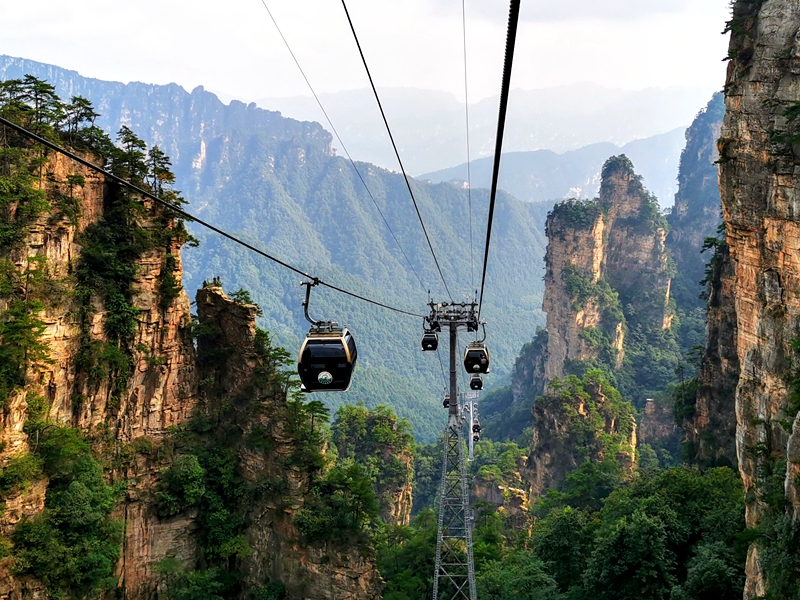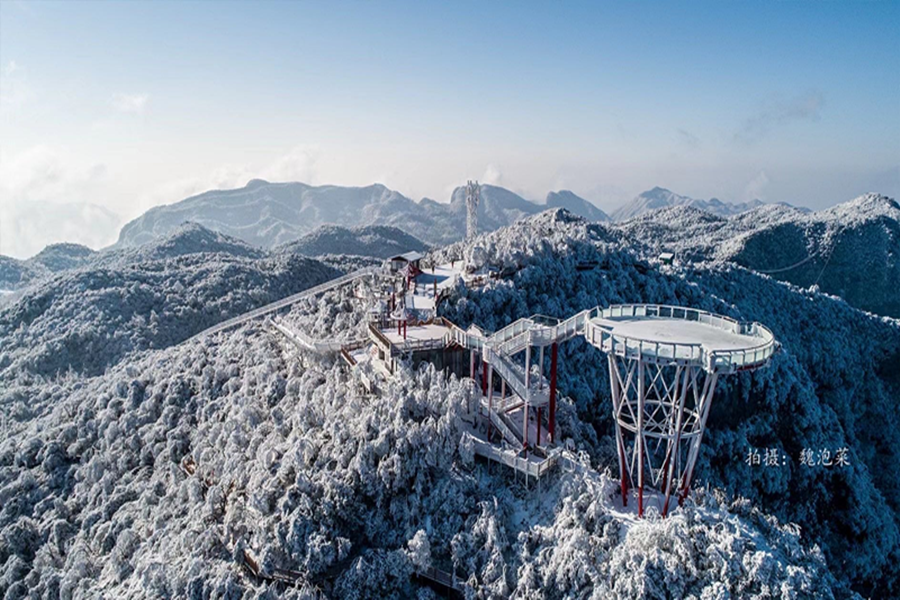
All famous former residence inside Fenghuang old Town
The tower of the Eastern City Gate, formerly called Shengheng Gate, stands just by the river,It can be traced back to 1715. Its lower part was built of purplish red sand stones, while the tower on it was a structure of old bricks. The gate, 3.5 m in width and 4 m in height, is shaped like half a circular arch. The tower is 11 m tall. and has 8 shooting holes above the gate. The tower of the Northern City Gate, or Bihui Gate, dates around 5 centuries back. It was built of red sandstone blocks produced nearby. In its outside wall are 2 lines of 4 shooting holes so that all the sphere outside could be under control. These gates are connected with a city wall, which, standing by th clear ‘Tuojiang River, is a strong defense against intruders.
The former residence of Shen Congwen (1902-1988), built by his grandfather Shen Hongfu in 1866, is a one-story house banked with fired bricks. The main buildings stand in 2 rows, the mi nor buildings stand on both sides. and the courtyard is covered with red and square stone slabs. It provides II rooms of various sizes. This complex, typical of Ming(1368-1644)and Qing (1616–1912)architecture of West Hunan, was listed in 1991 as a key cultural site under the protection of the provincial government. Thanks to Shen Congwen, this town became known to the outside world. On Dec. 28. 1902. Mr. Shen was born here. In the 1920s, he became well-known in the literary circle, and was reputed as”one of the top-class modern Chinese writers, second to Lu Xun(1881-1936) only”. His works Border Town, West Hunan and The Autobiography of Shen Congwen have a great influence both at home and abroad: they have been translated into over 40 languages and anthologized into university textbooks in over 10 countries and regions. He was twice nominated for the Nobel Prize for Literature. Besides, he was a famous historian and archeologist as well-the author of A Study of Ancient Chinese Costumes and other monographs.
The House of Chen Dounan, built in 1902, is made up of the first-row buildings, the court yard.the middle buildings and the last-row buildings. Protected on all four sides with a tall and strong firewall, it’s a courtyard house typical of Southeast China architecture. Here were born 2 generals of the revolutionary troops in the early 20th century: Chen Dounan(1886–1931) and hisnep hew Chen Fan( 1909–1943). Besides, here were shot inside views of old houses for such popular movies and TV seria ls as Doom of the Bandits in the Wulong Mountains, The Last King of Miao Ethnic Groups and Stories of West Hunan.
The former residence of Xiong Xiling(1869–1937) is a structure of wood and tile in the old style of South China. It has 4 rooms now exhibited in the original fashion. On June 25, 1869 of the lunar calendar, Mr. Xiong was born here. He was such”a wonder child from Hunan”as to pass the highest court test at 25 and enter the Imperial Academy. In 1913, he was elected by people as the first prime minister of the Republic of China.
The yangs’ Memorial, a wooden structure in the courtyard style, is located in the northeast of
the town, jusont by the old city wall. It was built in 1836 with the donation of Yang Fang, commander of the aboriginal troops.
